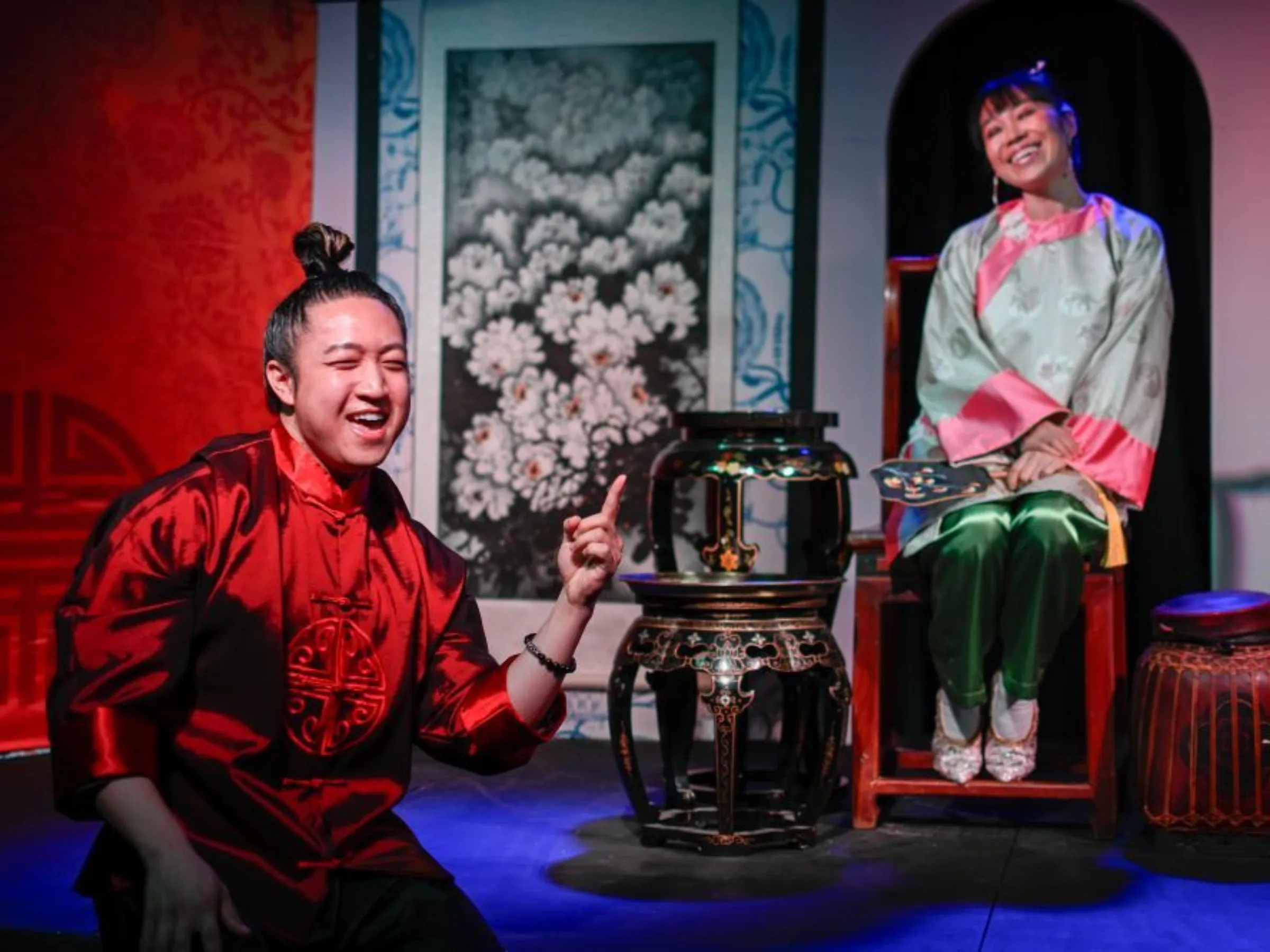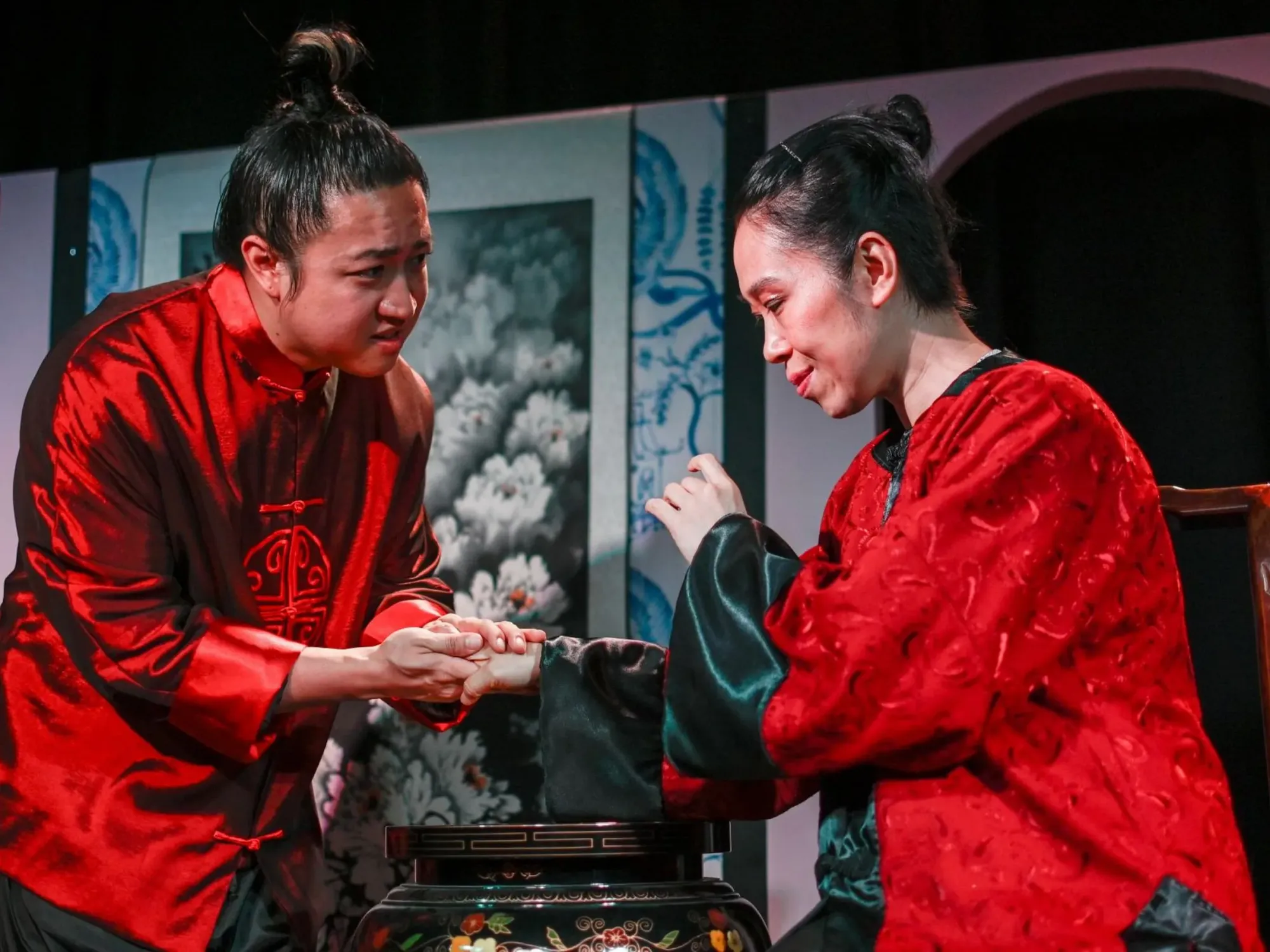The Chinese Lady
September 10, 2023
World Stage Theatre Company
You wouldn’t know it to look at the space from the street, but in a tiny studio on the always-weirdly-magical strip of Harvard Ave. between 11th and 15th, World Stage Theatre Company is presenting some of the most diverse, intentional, engaging community theatre Tulsa has ever seen. World Stage started here in 2017 with a powerful purpose: “to develop a company that would foster greater representation of actors of color, as well as tell stories that would invite the audience to explore compelling social and cultural themes.” Opening a season focused on the theme of identity, its recent production of The Chinese Lady pursued that purpose with moving clarity.
If the play’s title sounds like something on a placard at a zoo, that’s no accident. It’s where the ingeniously meta framing structure of Lloyd Suh’s 2018 play starts. Entering the World Stage Studio, audience members found themselves facing a diorama-like room, representing the ones in which a real woman named Afong Moy was displayed as an exotic oddity for curious onlookers at various 19th-century sideshows. (She was brought by traders to the U.S. from Guangzhou Province in 1834, when she was 14 years old.) And we stayed facing that room — in the position of those onlookers, with Afong and her attendant/translator Atung across from us — for the entirety of the play’s six scenes, through the increasingly despondent decades of their lives.
Each scene began with similar words: ”My name is Afong Moy. The year is [X] and I am [X] years old….” The two characters ran through their prescribed, ritualistic performance again and again, from a chopsticks demonstration to “the walk,” intended to show how Afong (the first-recorded Chinese woman on U.S. soil) moved with bound feet. These layers of repetition exemplified the flattening, dehumanizing effect of colonialist objectification, and the play was masterful in exposing the challenges inherent in translation of all kinds. (A scene where Afong and Atung have an audience with Andrew Jackson was particularly, and painfully, keen-edged on that point.) As the years and the scenes unfolded, all these “performances” began to fracture, revealing more of the wounds, dreams, and realities under their surface and in the wider history of discrimination against Chinese people in America.
Even with a script as intelligent and nuanced as this one, it’s no small feat for a cast of two to hold an audience so rapt for 75 minutes. Joshua Yap — best known locally for their musical theatre prowess — delivered a complex performance as Atung, full of biting humor, sensitive gestural expression, and a breathtaking range of feeling. In her first-ever outing as an actor, Xinying (Alpha) Zhang brought her depth of experience as a dancer, choreographer, and educator to the role of Afong, subtly modulating her voice and physical posture with each new decade, each new question of identity, in her character’s life. Her passionate closing monologue brought the play’s effort to articulate the impact of appropriation and exploitation into poignant focus: “Can you see me?” she asked, addressing the audience directly, as she and Yap had done for much of the show. Is it possible for someone “to be looked at long enough to be understood”?
Director Jeremy Stevens and assistant director Veronica Smith, both white, recognized the necessity of a process that centered Chinese voices. As the creative team discussed in a post-show Q&A, they worked collaboratively with the actors, both of Chinese origin, who took the lead on many decisions — for instance, selecting historically accurate set and costume pieces, ensuring that every bow and gesture was culturally authentic, and choosing to speak parts of the script in Chinese instead of English (giving the largely white audience a bracing taste of what it’s like to be the “other” in the room). Stevens’ call to reconfigure the 50-seat space so audience and actors would meet each other head on, at close quarters, created a usefully uncomfortable sense (for everyone) of being boxed in within the micro and macro structures the play explores: a room within a room, where genuine contact is both close and far away.
If you go to a World Stage show, don’t expect to just sit and watch. This troupe offers an active theatre experience, one that treats every audience member as a necessary participant in a cultural conversation, with a mind that can handle real history and the agency to do something better for the future. Before the house lights went down at this matinee performance, a board member acting as emcee invited the audience to breathe, laugh, clap, and gasp together — practicing the energy exchange that’s part of live theatre — and Stevens spoke movingly about attempts to “stifle stories” across the globe. “Our response,” he said, “is to make more art.”
Next from World Stage Theatre Company: Reflections by Obum Ukabam and Bailey James







